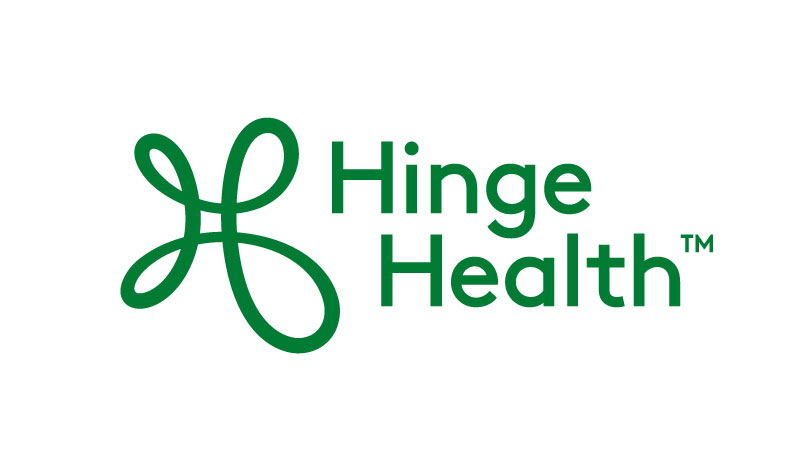Auto logout in seconds.
Continue LogoutMusculoskeletal (MSK) conditions carry a heavy burden of disease for patients and the healthcare system. Current approaches to MSK care are fragmented and overly reliant on imaging and surgical interventions, hindering optimal patient outcomes and contributing to financial strain on the system. There is a clear need for more accessible, value-driven MSK care.
Competing stakeholder priorities complicate MSK care delivery: Payers are managing the high cost of many treatments, providers are navigating evolving payment models while delivering care, and patients face fragmented care pathways that can lead to unnecessary treatment. The healthcare industry must find a path forward that balances the needs of payers, providers, and patients by delivering high-value care (HVC).
What is high-value care?
HVC is understood as the use of holistic, evidence-based care to meet patient needs without using unnecessary resources, leading to better clinical outcomes and cost efficiency. In practice, this means accurately assessing a patient’s unique needs and facilitating access to a range of treatment options to ensure they receive their best, first line of treatment.
In contrast, low-value care (LVC) is characterized by higher cost, often invasive, treatments that provide little to no benefit to the patient, potentially cause harm, and waste resources. Despite the efforts of healthcare leaders across sectors, LVC remains common — often the result of care pathways that focus on driving volumes, formed by the misaligned incentives in a mainly fee-for-service (FFS) world.
"True high-value care enables member outcomes by aligning care delivery with provider incentives. By creating a supporting structure where providers are empowered to succeed, we reduce systemic burden and establish a clear, sustainable pathway to better health."
For MSK patients, HVC doesn’t necessarily mean avoiding surgery or specialists. Nor is it forced steerage toward conservative treatments. When a delay would result in poor outcomes, HVC may mean early surgical intervention. For other patients, HVC may mean addressing pain without surgery or medication by using movement and lifestyle changes. Simply put, HVC uses only the right tests and treatment to prevent clinical and financial waste and improve clinical outcomes.
Delivering HVC requires enhanced care coordination, collaboration across industries, and integrated digital solutions that expand access to personalized care. The best path to HVC involves creating a more unified care experience that gives patients integrated access to the right care at the right time.
About this report
This report is intended to help advance HVC in MSK and other specialty care spaces. In writing this report, Advisory Board researchers conducted an extensive literature review, in-depth consultation with healthcare industry experts, and gathered insights from leaders at accountable care organizations (ACOs), progressive health plans, and clinical practices nationwide.
Growing MSK burden combined with LVC contributes to escalating costs
About half of all U.S. adults are affected by an MSK condition — costing payers and patients approximately $661 billion annually. This surge in MSK spending is fueled by an aging population, increasing rates of comorbidities, rising cost of surgical procedures, and frequent LVC. These influences pose substantial financial pressure, especially for payers.
Frequent LVC includes diagnostic imaging, medication, and surgical interventions that can negatively impact outcomes when used preemptively or inappropriately.
Annual cost to payers and patients as a result of MSK conditions
Improved access to other evidence-based treatment options prevents potential LVC
Other evidence-based MSK treatment options include physical therapy (PT), lifestyle modifications, behavioral health support, and non-pharmaceutical pain relief. Research shows that a multidisciplinary approach with a combination of noninvasive, complementary interventions effectively reduces pain and prevents surgery in 95% of MSK patients who complete treatment. And, when patients use PT within three months of diagnosis, they are less likely to use opioids long term.
One tool that has proven effective in supporting the uptake of evidence-based treatments for chronic MSK pain is digital health. Digital health tools have the ability to expand access to care, identify high-risk patients, educate them on diverse treatment pathways, and provide ongoing clinical support. Increasingly, health plans and plan sponsors are incorporating digital solutions into their benefit designs, while providers are leveraging these tools to guide at-home exercise programs and embed them directly into patient portals.
High-value MSK care can be hard to come by
Prioritizing the most appropriate treatments is neither new nor controversial. HVC zeroes in on underused care options within existing standard of care models. The healthcare industry now places more emphasis on outcome-based care and innovations that enhance the ability to deliver HVC, but leaders note that there are still barriers to ensuring equitable and consistent access to high-value MSK care.
Resarch insight
Across all levels, stakeholders must be bought into the efficacy and promotion of non-surgical options and have the systems in place to engage patients when they are ready. |
Challenge 1: Industry-level barriers
At the industry level, financial forces keep MSK stakeholders misaligned, preventing them from achieving HVC at scale. Misaligned payment incentives lead health plans, providers, and employers to prioritize cost and quality differently, which can cause clashing approaches to care.
Challenge 2: Health plan and plan sponsor barriers
Health plans and plan sponsors are motivated to direct patients to high-value, lower-cost care options, but may struggle to do so in a way that doesn’t feel restrictive to providers and patients.
Challenge 3: Provider-level barriers
Traditional MSK care models favor surgery or medication because other evidence-based options are seen as less accessible or effective. And, even though research supports the efficacy of PT and other non-surgical options, greater education and engagement are needed for physician buy-in and behavior change.
Challenge 4: Patient-level barriers
Patient perceptions and social drivers of health are also significant barriers to HVC. Evidence-based alternatives, like PT or lifestyle interventions, are frequently seen as barriers that prolong time to surgery. Patients often view surgery, injections, or medications as an option that will provide quicker relief than attending multiple physical therapy sessions and committing to an exercise program.
Existing efforts to promote HVC
Healthcare leaders acknowledge financial and clinical barriers to HVC, especially in specialties. Current strategies are often fragmented and only partially address these issues, rather than offering a comprehensive solution that improves care delivery as a whole.
There’s a need for a more unified solution that focuses on thoughtful connectivity of existing, proven solutions. Payers, providers, and third parties must collaborate to create a seamless care experience, reduce complexity, and scale to broad populations without compromising health outcomes or costs — remembering that the ultimate goal is to ensure patients receive the right treatment when and where they need it.
"We’ve made a conscious effort to consolidate where possible. Instead of having various vendors for chronic care management, virtual care, and so forth, we use one platform with various solutions."
Creating and operationalizing a unified care model
Healthcare should emulate other industries like banking and retail by integrating in-person and digital services and providing better access to expert support for a cohesive customer experience. This requires breaking traditional silos and uniting the entire patient journey — from entry points to care to treatment recommendations and delivery methods. The result is a unified care model (UCM) that creates a pathway to seamless, multidisciplinary, evidence-based care, supported by personalized treatment and hybrid delivery options.
Step 1: Decide which treatment options best fit the patient’s unique needs
Advances in treatment and diagnostics offer patients the promise of personalized, tailored care. For example, genetic markers can help predict the onset or progression or certain MSK conditions, and advances in biometric data analysis can help predict a treatment’s effectiveness. This ever-expanding universe of treatment options also increases the complexity of care delivery. The treatments chosen should reflect a patient’s unique needs — in the MSK space this includes their perception of their pain, their ability to follow through on a particular treatment, and their ability to access treatment.
Education: Determining the best MSK treatment starts with a comprehensive understanding of pain. Growing evidence supports the use of pain neuroscience education (PNE) as a high-value approach to communicating with patients about their MSK pain. PNE helps patients learn how the brain and nervous system process pain signals, shifting their perspective from viewing pain as simply tissue damage to recognizing it as a complex interplay between the nervous system and psychosocial factors. Better understanding one’s pain is a proven approach for treating MSK pain, disability, and psychosocial factors. Effectively communicating diagnoses to patients can help build their confidence to participate in their care.
Care options: In addition to a comprehensive understanding of pain, patients need access to comprehensive treatment options. In the traditional, linear care pathway, primary care physicians (PCPs) often play quarterback in directing the MSK care journey. However, studies show that PCP-led triage often results in suboptimal diagnosis, unnecessary imaging, and fragmented treatment. Instead, research indicates better patient outcomes and higher satisfaction when orthopedic specialists or physical therapists manage care, resulting in more timely treatments and fewer instances of LVC.
Offering access to a multidisciplinary team — including physical therapists, physiatrists, behavioral health specialists, lifestyle coaches, and more — empowers patients to choose who oversees their treatment. This choice enhances patients’ understanding of comprehensive treatment options and encourages active involvement in care decisions. Additionally, trusted care managers build patients’ confidence, motivating them to explore new treatment options and connecting them with a network of highperforming providers.
High-performance network: Access to quality, multidisciplinary care requires action from crossindustry stakeholders to connected patients to the best providers. Provider organizations may create Accountable Care Organizations (ACOs) which incentivize coordinated, HVC through shared savings programs. Health plans and plan sponsors may use curated networks to ensure patients are receiving care only from high-performing providers. Regardless of the approach, directing care to high-value providers and practices can reduce unnecessary procedures and promote appropriate, cost-effective care.
Step 2: Deliver treatments to maximize quality and accessibility
In addition to having a choice in who manages their care, patients also benefit from having a choice in how and where they receive care. As previously highlighted, digital health solutions have emerged as a leading strategy to improve personalization and availability of care. Specifically, virtual care options have been highly impactful at making MSK care more accessible, convenient, and affordable for patients. However, patients still value the option for in-person care options when necessary.
Hybrid care: Research supports the importance of both virtual and in-person care options that meet individual patient preference and evolving needs. Hybrid care combines the benefits of in-person and virtual care into a single integrated solution, ensuring a cohesive experience for the patient.
In addition to improved care for patients, establishing a UCM for MSK care offers benefits for all stakeholder groups involved.
- Providers
- Medicare Advantage health plans
- Commercial health plans
Fee-for-service incentivized
- Unified care helps alleviate administrative burdens for providers and enables higher quality referrals. For orthopedic surgeons, this means having more time to see patients who are appropriate surgery candidates.
Value-based care incentivized
- Unified care helps ensure that patients have access and are referred to the most appropriate care. In MSK care, this means PT, lifestyle interventions, and other lessinvasive care options are considered as viable as surgery. VBC providers benefit by avoiding unnecessary, expensive procedures and improving patient outcomes.
- Unified care can help retain plan members by improving the member experience via access to personalized, coordinated treatment options. For Medicare Advantage plans, this means they’re able to reduce member turnover and improve plan performance in a competitive payer market.
Self-funded employers
- Unified care helps seamlessly connect members to high-value providers and manage utilization by improving access to lower-cost HVC options. In MSK care, this means the potential to significantly reduce healthcare expenses by minimizing reliance on costly surgeries, imaging, and long-term medication use.
Fully-ensured employer
- Unified care helps to improve the employee health experience and satisfaction by expanding access to diversified care options that meet individual employee health needs. In MSK care, this means investing in benefits that meaningfully address employee MSK pain and avoiding downstream expenses. In addition to improving employee outcomes and well-being, these actions can boost workplace productivity and organizational affinity.
Conversations you should be having
The journey to advance HVC in the MSK space begins with reflection and collaboration. Stakeholders across healthcare must work together to identify opportunities to transition from often fragmented and rigid care pathways to unified, patient-centered solutions that prioritize outcomes and costs. These new HVC models will deliver comprehensive specialty care by ensuring accurate initial diagnoses, evidence-based conservative treatments, timely access to clinically appropriate procedures, and the ongoing measurement of long-term outcomes.
As you read through and digest these challenges and solutions, we encourage you to ask yourself and your colleagues these questions to guide your future HVC strategy:
- How does our organization’s current care model incentivize LVC, and what steps can we take to transition to an HVC framework?
- What are our organization’s structural barriers to care, and how can we address them to ensure equitable access to HVC?
- Are we effectively leveraging alternative care options to reduce reliance on costly surgeries and medications? If not, what adjustments can be made?
- How can we better integrate care delivery across stakeholders to create a unified care model that improves outcomes, reduces costs, and enhances satisfaction?
- What role does technology play in our efforts to improve patient care coordination with the most appropriate treatment options?
- How can we foster collaboration and trust among stakeholders to align incentives and operationalize HVC solutions effectively?
Hinge Health unifies digital and in-person MSK care, helping people move beyond pain to avoid costly, invasive treatments. A care team of clinical experts empowered by AI guides people through fully integrated, personalized care all in one app. By making high value care easy to access and stick with, we improve lives and lower costs — for everyone.
This report is sponsored by Hinge Health, an Advisory Board member organization. Representatives of Hinge Health helped select the topics and issues addressed. Advisory Board experts wrote the report, maintained final editorial approval, and conducted the underlying research independently and objectively. Advisory Board does not endorse any company, organization, product or brand mentioned herein.
To learn more, view our editorial guidelines.

This report is sponsored by Hinge Health. Advisory Board experts wrote the report, maintained final editorial approval, and conducted the underlying research independently and objectively.
Don't miss out on the latest Advisory Board insights
Create your free account to access 1 resource, including the latest research and webinars.
Want access without creating an account?
You have 1 free members-only resource remaining this month.
1 free members-only resources remaining
1 free members-only resources remaining
You've reached your limit of free insights
Become a member to access all of Advisory Board's resources, events, and experts
Never miss out on the latest innovative health care content tailored to you.
Benefits include:
You've reached your limit of free insights
Become a member to access all of Advisory Board's resources, events, and experts
Never miss out on the latest innovative health care content tailored to you.
Benefits include:
This content is available through your Curated Research partnership with Advisory Board. Click on ‘view this resource’ to read the full piece
Email ask@advisory.com to learn more
Click on ‘Become a Member’ to learn about the benefits of a Full-Access partnership with Advisory Board
Never miss out on the latest innovative health care content tailored to you.
Benefits Include:
This is for members only. Learn more.
Click on ‘Become a Member’ to learn about the benefits of a Full-Access partnership with Advisory Board
Never miss out on the latest innovative health care content tailored to you.



